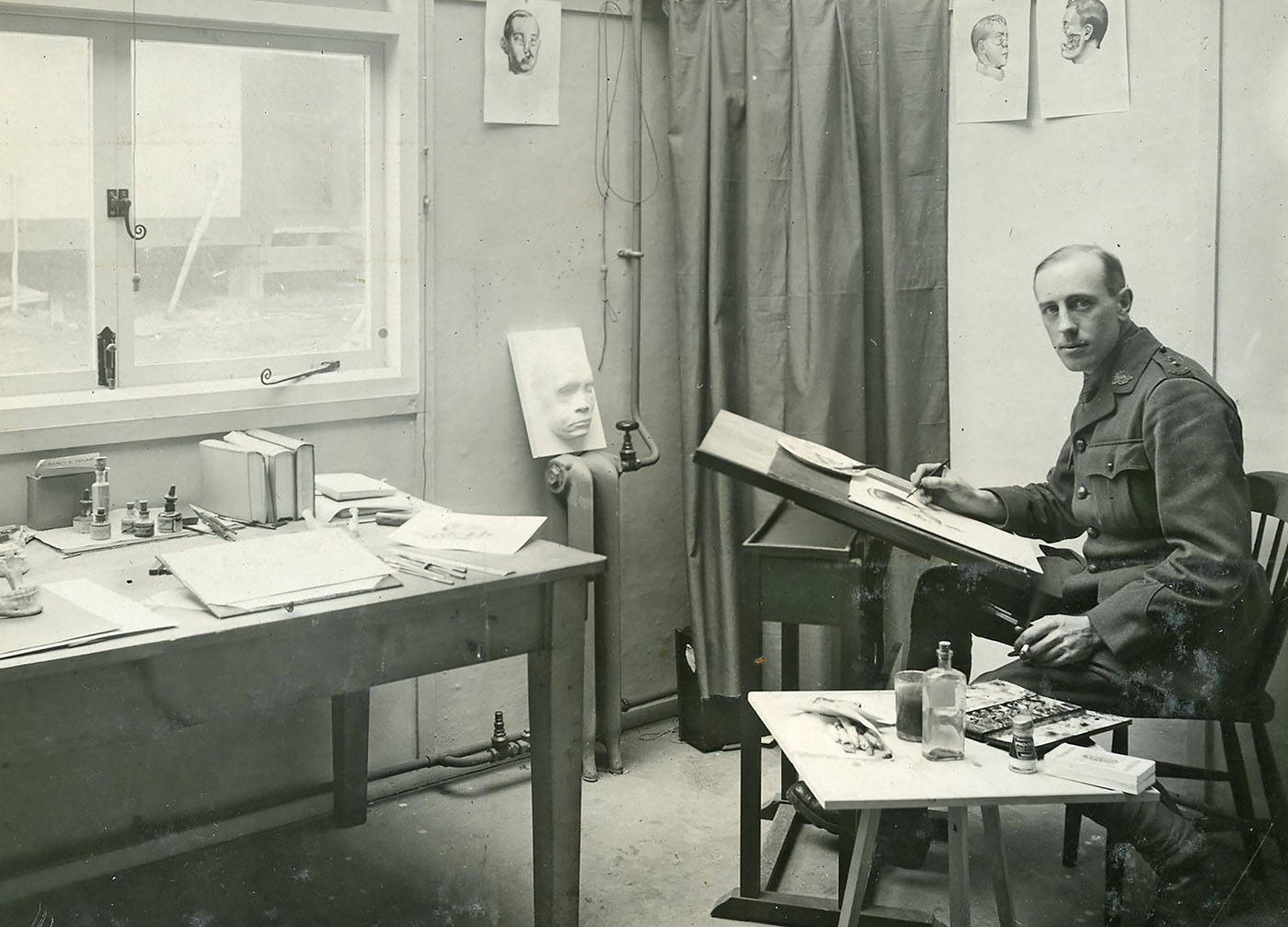Artist and writer
Daryl Lindsay spent 2 years as a driver in the Australian Army Service Corps, but his most important work during the war was as an artist.
In 1918 Lindsay was posted to Queen’s Hospital in Sidcup, Kent, where he documented patients’ horrific facial injuries and the ground-breaking reconstructive surgery being performed there. His diagrams, and those of other medical artists, were used to train surgeons worldwide.
Machine-guns, shell fragments and shrapnel tore men apart in ways never before experienced. Surgeons had to find new methods of treating the injured and were driven by a desire to help soldiers regain a sense of purpose and dignity.

